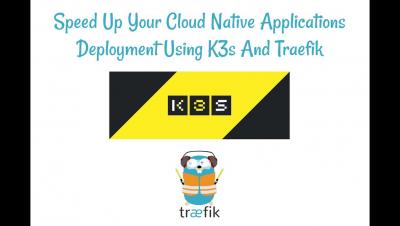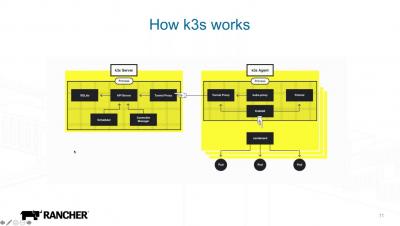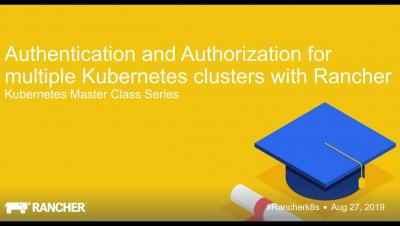Operations | Monitoring | ITSM | DevOps | Cloud
Rancher
Expanding SQL Server Support
Support for relational databases is a growing focus for Kubernetes users, and the release of Windows Server 2019 is expanding options for .NET applications and SQL Server. SQL Server workloads, however, often rely on Active Directory and Windows Auth, and storage arrays, which will not be supported by SQL Server containers on Windows Server 2019. Fortunately, a new Rancher Labs partner, Windocks, offers new options for SQL Server on Kubernetes and Rancher.
Kubernetes Master Class Day 2 with Stateful Applications - Implementing a Data Management Strategy
Easy Ingress Management on the Edge with K3s lightweight Kubernetes and Traefik
K3s and Traefik are partnering to speed up cloud native applications deployment. K3s, by Rancher, is the best way to have a lightweight, fully CNCF conformant Kubernetes cluster running on diverse infrastructures, including possible IoT appliances such as Raspberry Pis. K3s starts in seconds thanks to its light weight nature. As it adds some components to the cluster automatically, k3s is very easy to use and therefore very accessible for new users.
It Takes a Village
Rancher Rodeos are great events for learning Kubernetes and Rancher beginner-level concepts, with attendees gaining just the right amount of knowledge to get started with provisioning Kubernetes clusters and launching applications. I present frequently at Rodeos, and the scene typically unfolds like this: together with attendees, we are walking through Rancher features, and usually as we’re experimenting with Monitoring, Alerting, and Logging, I see the wheels start turning in their heads.
Announcing The Rancher Trusted Ranch Hand Program
The Rancher community is 30,000+ strong and growing fast! In order to continue growing and nurturing our vibrant open source community, we’ve created the Trusted Ranch Hand Program. Trusted Ranch Hands are a select group of knowledgeable ranchers ready, willing, and able to help other Ranchers as we all adopt DevOps practices and principles using Rancher, Kubernetes, and related technologies that help us all Run Kubernetes Everywhere!
Intro to k3s Lightweight Kubernetes Online training
Authentication and Authorization for multiple Kubernetes clusters with Rancher
And Then There Were Three -- IBM, VMWare, and Rancher
When we started Rancher in 2014, our vision was to enable enterprise IT to procure and utilize computing resources (“cattle”) from any infrastructure provider. We were extremely lucky to be able to leverage wonderful technologies like Kubernetes which made computing resources consistent across all infrastructure providers.
Zero to k3s Kubeconfig in seconds with k3sup
k3sup: From zero to KUBECONFIG in < 1 min K3s is an open-source, lightweight Kubernetes distribution by Rancher that was introduced this year and has gained huge popularity. People not only like the concept behind it, but also the awesome work that the team has done to strip down the heavy Kubernetes distribution to a minimal level. Though k3s started as a POC project for local Kubernetes development, its development has led people to use it even at a production level.









